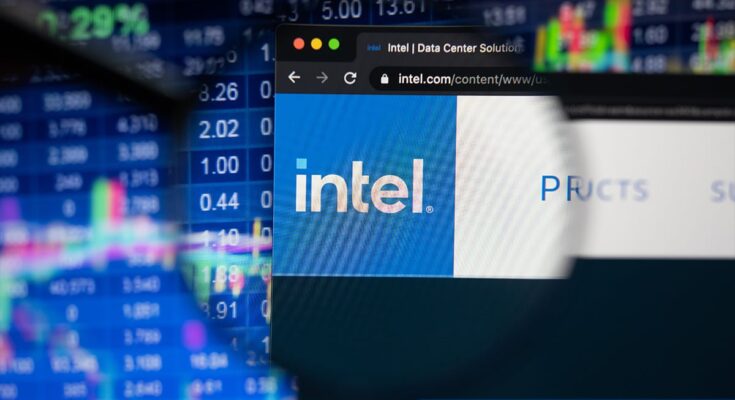TLDR
- Intel stock rose 6.04% to $22.47 amid optimism over its AI PC initiative.
- Collaboration with HP boosts AI PC offerings, enhancing key application speeds.
- Intel trails rivals AMD and Qualcomm in AI PC market positioning.
- Valuation remains low with a price/book ratio of 0.93 versus industry average of 31.65.
- Long-term returns underperform S&P 500 and sector peers; earnings estimates cut.
Intel Corporation (NASDAQ: INTC) saw its stock price climb 6.04% to $22.47 in early trading on June 24, 2025.

Intel Corporation (INTC)
This gain followed news of its ongoing expansion into the AI PC market. The company’s recent partnership with HP resulted in the launch of new AI-driven PCs powered by Intel’s Core Ultra processors, including HP’s EliteBook X, Ultra, and EliteBook 8 models.
Intel’s collaboration involved optimizing CPU, GPU, and NPU resources across eight AI PC models and twelve configurations. Applications like Microsoft Power BI ran 45% faster, Tableau 48% faster, and Adobe Lightroom 32% faster than prior systems. New AI tools, such as Writeup and Canvid, demonstrated speed improvements of 165% and 223%, respectively, marking their first availability on Windows PCs.
HP and Intel co-engineered AI PCs that redefine efficiency — not just with hardware, but with software that optimizes performance across the CPU, GPU and NPU in Intel Core Ultra processors.
The result? Key AI apps run faster and better on HP’s AI PCs.👇 https://t.co/xYLEmOFdUK
— Intel News (@intelnews) June 23, 2025
Competitive Pressures Remain Intense
Despite this progress, Intel faces stiff competition in the AI PC space. Qualcomm’s Snapdragon X processors have gained traction among OEMs like Dell, ASUS, and Samsung. Meanwhile, AMD’s Ryzen AI 300 Series offers robust AI computing capabilities and is seeing wide adoption, posing a direct challenge to Intel’s Core Ultra lineup.

The broader AI market is forecast to grow from $757.6 billion in 2025 to $3.68 trillion by 2034, creating significant opportunities. However, Intel must catch up with rivals who are already securing partnerships and technological leads in this expanding sector.
Valuation and Financial Weaknesses Limit Enthusiasm
Intel’s valuation reflects lingering concerns. Its price/book ratio stands at 0.93, far below the industry average of 31.65. The company also holds a Zacks Value Score of D, signaling potential overvaluation relative to its fundamentals. Earnings estimates have sharply declined, with 2025’s expected EPS dropping 39.58% to $0.29 and 2026’s forecast down 29.36% to $0.77.
Profitability metrics remain negative. Intel’s trailing twelve-month (TTM) profit margin is -36.19%, with returns on assets and equity at -1.09% and -18.13%, respectively. The company posted a net loss of $19.2 billion on TTM revenue of $53.04 billion and reported levered free cash flow of -$7 billion.
Long-Term Performance Still Underwhelms
While Intel shares are up 12.07% year-to-date, they have fallen 26.03% over the past year, lagging the S&P 500’s 11.57% gain. Over three and five years, Intel’s returns trail the benchmark significantly, with declines of 38.21% and 57.34%, respectively.
Despite these challenges, Intel’s push into AI PCs could help revive investor confidence if market adoption accelerates and execution improves.
Source link


